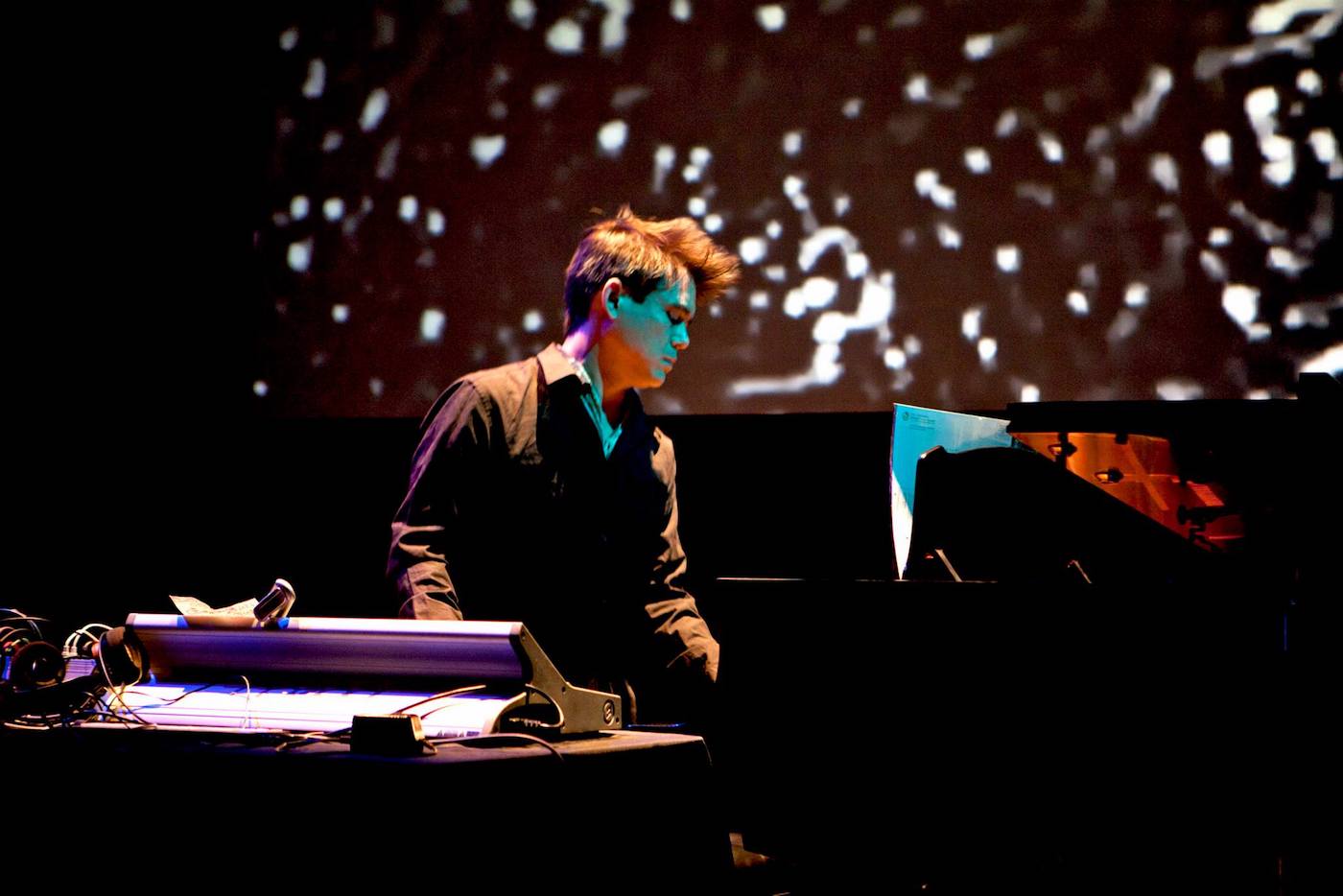
Interview + Premiere: Headboggle – “Skywriter”
Music Interviews
SLUG is delighted to premiere the new music video for Headboggle’s “Skywriter.” Watch the video here, and check out our interview feature with the artist below.
When talking about music—his or others’—Derek Gedalecia exudes palpable excitement. He boasts a handwritten journal filled with a daily listening log of albums, podcasts and comedy sets, an ever-growing document of his myriad influences and interests—”a lot of stuff probably gets through a filter that other people would abandon as something silly,” he says of his endless openness to artistic surprise and discovery. Making music under the name Headboggle (or a handful of minor variations such as Head Boggle, Head Boggle’d, Head-Boggle, Headboggled, etc.) since 2006, Gedalecia has amassed a catalog of close to 100 releases that cycle through an ensemble cast of varying sonic characters while always retaining the musician’s penchant for gleeful chaos.
After playing classical piano and punk guitar growing up, Gedalecia moved to the Bay Area in the late ’90s and found himself caught up in the city’s noise and experimental scenes. Here, the eclectic and grandiose ethos of the DIY scene caught the young musician’s ear. “In noise, it’s sort of like you don’t need anything—you don’t need equipment [or] training, just maybe an idea sometimes or a concept,” he says. Instead of these conventional tools, Gedalecia looked toward larger, more conceptual frameworks to guide his composition and performance. For instance, he notes the block-layering process of an album like In Dual Mono, where he would record two distinct one-channel compositions on top of each other. “They wouldn’t be going the same rhythm, but [they would] arc in the same amount of time,” he says, praising the incidental synchronicity this technique afforded him.
“[It’s] something that has a lot going on, but [it’s] a lot of melodic things going on.”
Gedalecia frequently reflects on his past work in this manner, wandering back to a one-off experiment with church bells or a particular residency that shaped his current approach amid our conversation. His openness can often come across as refreshingly casual and clear-sighted—when asked about his shift to a more melodic language on his two recent releases for Ratskin Records (2019’s Polyphonic Demo and this year’s Digital Digital Analog) he laughs and says, “ I think the big question is why is the other stuff so noisy?” He doesn’t portray a sardonic or self-effacing attitude as much as an honest curiosity about the unpredictable path of his own development and musical growth.
Still, the musical tenor of these Ratskin releases arrives via a nameable agent: Gedalecia’s new mainstay instrument, a polyphonic Prophet synthesizer. After many years spent working with various noise assemblages and monophonic synthesizers, acquiring the Prophet opened up fresh harmonic and melodic avenues for Gedalecia and led to the self-described “baroque” textures on Polyphonic Demo and Digital Digital Analog. “The Prophet allows you to do that, really—you can make organ, piano sounds then everything in between,” he says. “[It’s] something that has a lot going on, but [it’s] a lot of melodic things going on.” An offshoot of the atonal walls of electronics that make up many past Headboggle releases, these newer pieces pile on interlocking countermelodies like a grab bag of pieces from a dozen different Lego sets—bright and bold, by turns discordant, lateral and revelatory.
“It’s all these random sort of things happening, [but] it’s all still grooving along.”
Gedalecia’s characteristic sense of exploration and process-based experimentation molded the base structures of these orchestral towers. In writing much of Digital Digital Analog, the musician put on a sort of compositional blindfold: After laying a base chord progression or pattern, he would record numerous topical layers, each one tracked without playback from the previous iterations. “When I would go to play back these interlocking parts, you get this sort of feel of like you’ve jammed with someone else,” he says, offering up the carnival fanfare/hold music jingle mashup of “Screenshot” as a distilled reflection of this approach. “It’s all these random sort of things happening, [but] it’s all still grooving along.”
Into the future, Gedalecia looks to further refine this unique, improv-compositional approach he used on Digital Digital Analog, slowing down his rapid output rate and allowing for more decisive creation. “I’m really excited about [the idea of], ‘Let’s take 40 minutes out of two years of working and put that together’,” he says, expressing equal anticipation for the prominent inclusion of piano and mellotron on a future release. Stay in touch with Headboggle on Instagram @headboggle, and listen to Digital Digital Analog below.